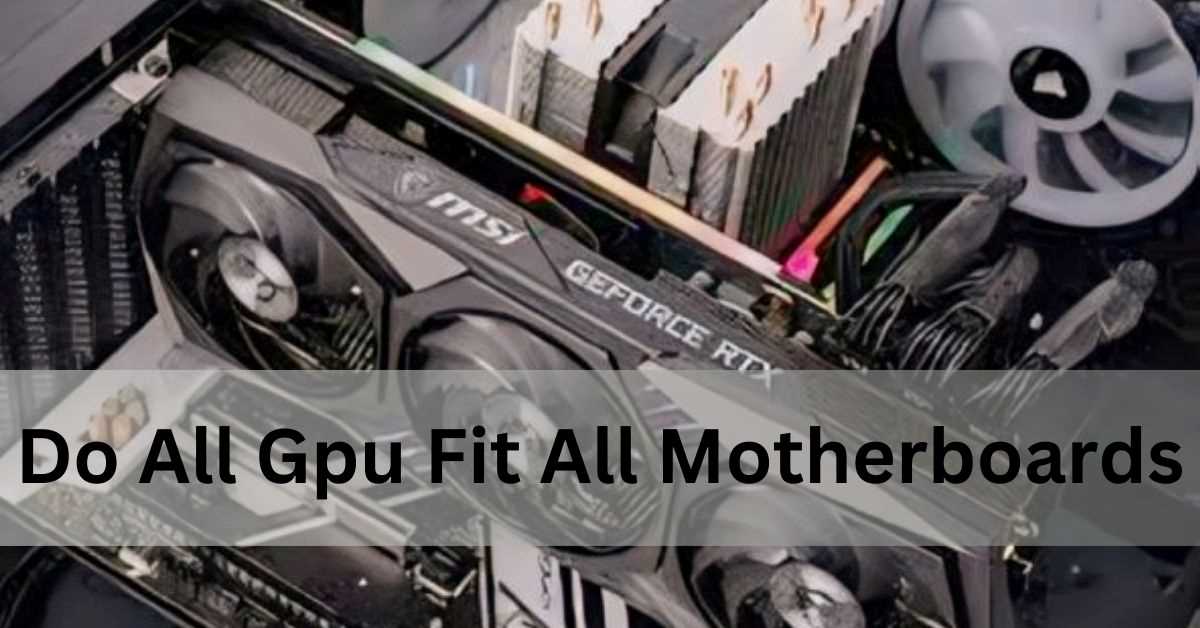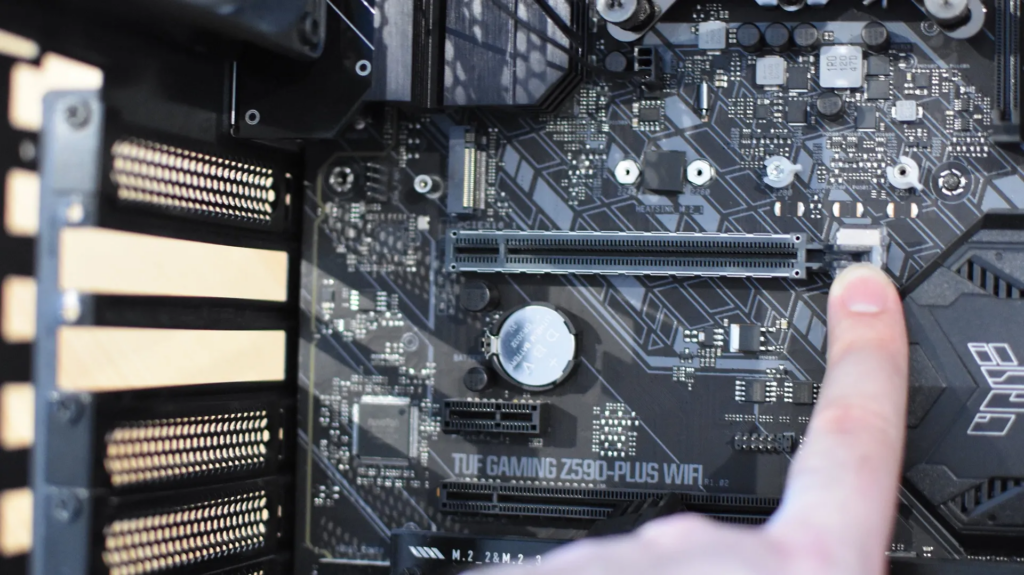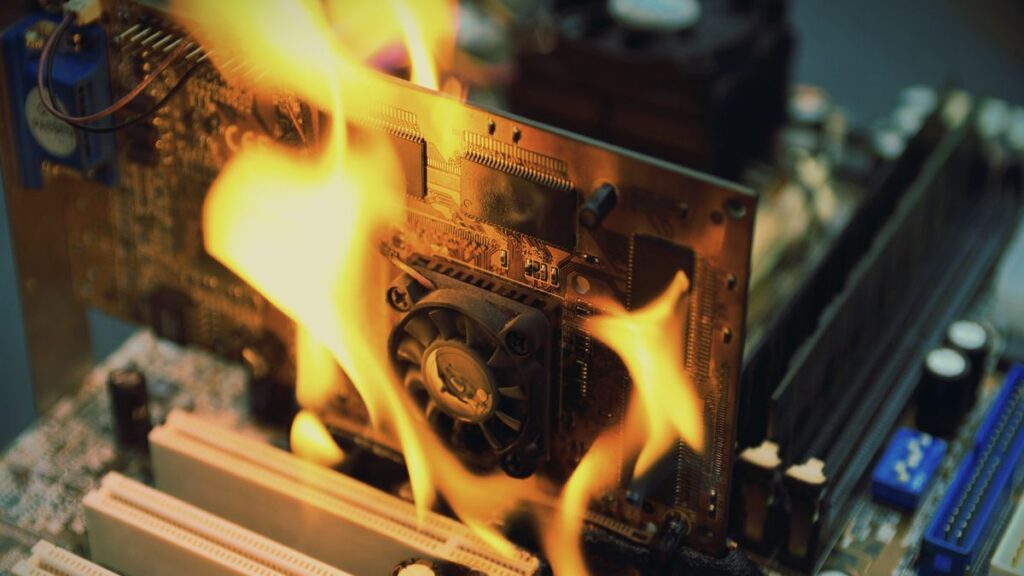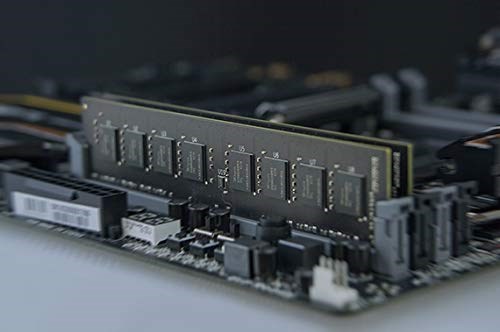
When I upgraded my GPU I found it was not compatible with my motherboard. I needed a PCIe x16 slot, which my old motherboard didn’t have. Also, the new GPU was too big for my case, so I had to get a new one. It showed me how important it is to check compatibility before buying.
Not all GPUs are compatible with every motherboard. It is very important to verify that your motherboard has a PCIe x16 slot and enough space for the GPU. Also, make sure your power supply can handle the power requirements of the GPU.
We’ll cover if each GPU fits with all motherboards, focusing on PCIe slot types, space requirements and power requirements. This will help you ensure compatibility between your GPU and motherboard.
What Type Of Motherboard Slot Do Gpus Need?
Most modern GPUs require a PCIe x16 slot to connect to the motherboard. The PCIe (Peripheral Component Interconnect Express) x16 slot is the standard interface for high-performance graphics cards, providing the necessary bandwidth for data transfer.
This slot is long and usually has a retention clip on one end to secure the GPU. Older motherboards may have PCIe x8 or PCIe x4 slots, which do not offer the same bandwidth as PCIe x16 slots and may not be compatible with newer GPUs designed for higher performance.
Why Might A Gpu Not Fit A Motherboard?
Several factors can cause a GPU not to fit a motherboard:
Slot Type Mismatch:
GPUs need a PCIe x16 slot. If your motherboard only has PCIe x8 or older PCI slots, the GPU will not fit or function properly.
Physical Size:
GPUs come in various sizes, and some are quite large. If your case or motherboard layout is compact, the GPU might not fit physically.
Power Requirements:
High-performance GPUs often require additional power connectors beyond what the PCIe slot provides. If your power supply unit (PSU) does not have the correct connectors or sufficient wattage, the GPU may not work properly.

How Can You Check If A Gpu Is Compatible With Your Motherboard?
To ensure compatibility between a GPU and your motherboard:
1. Check the Slot Type:
Verify that your motherboard has a PCIe x16 slot. You can find this information in the motherboard’s manual or specifications.
2. Measure Available Space:
Measure the available space in your case to ensure the GPU will fit. Check the dimensions of the GPU and compare them with your case’s internal dimensions.
3. Verify Power Supply:
Check your PSU’s wattage and connectors to ensure it can support the GPU’s requirements. Look for the necessary power connectors (such as 6-pin or 8-pin connectors) that the GPU might need.
4. Consult Manufacturer Specifications:
Review the GPU and motherboard manufacturer’s specifications to confirm compatibility. Some manufacturers provide compatibility lists or tools to help with this.
What Are The Common Issues With Gpu And Motherboard Compatibility?
Slot Mismatch:
GPUs need a PCIe x16 slot. If your motherboard only has PCIe x8 or PCIe x4 slots, the GPU might not perform well or fit properly.
Size Constraints:
Larger GPUs might not fit in smaller cases or could block other components. Ensure your case has enough space for the GPU.
Power Supply Limitations:
High-performance GPUs often need extra power connectors. Check that your power supply unit has the right connectors and enough wattage.
BIOS/Firmware Issues:
An outdated BIOS might not support new GPUs. Updating the BIOS can resolve compatibility problems. Updating the BIOS involves a careful process, including downloading the latest version from the motherboard manufacturer’s website and following their installation instructions to avoid potential risks.
When Should You Consider Upgrading Your Motherboard For A New Gpu?
Consider upgrading your motherboard if:
- No Compatible Slot: Your current motherboard lacks a PCIe x16 slot needed for modern GPUs.
- Space Issues: Your case or motherboard layout does not accommodate the size of the new GPU.
- Power Supply Requirements: Your current motherboard and PSU cannot provide the necessary power or connectors for the new GPU.
- Future-Proofing: Upgrading to a newer motherboard can provide additional benefits, such as support for newer technologies and better overall system performance.
How Does Physical Space Affect Gpu And Motherboard Compatibility?
Physical space affects GPU compatibility in several ways:
- Case Size: Larger GPUs require more space. If your case is too small, the GPU may not fit or might obstruct airflow.
- Motherboard Layout: Some motherboards have components or connectors that could interfere with larger GPUs. Ensure there is enough clearance around the PCIe slot.
- Cooling: Adequate space is also needed for proper cooling. A larger GPU might obstruct existing case fans or require additional cooling solutions.

Motherboard Gpu Compatibility Checker:
A motherboard GPU compatibility checker is an online tool or software that helps determine if a specific graphics card will work with your motherboard.
By entering details such as motherboard model and GPU model, these tools estimate compatibility based on slot type, location, power requirements and other factors. This can be especially useful for ensuring that new GPUs will work with existing hardware and avoiding potential problems before purchase.
Gpu Compatibility With Cpu – Learn More!
GPU compatibility with the CPU involves making sure that the graphics card and processor work well together. Although most modern GPUs and CPUs are compatible, performance may be limited if the CPU is too old or underpowered compared to the GPU.
This is known as a bottleneck, where the CPU can limit the performance of a high-end GPU. To maximize performance, make sure that both the GPU and CPU are well matched in terms of capabilities and generation.
Are All Motherboards Compatible With All Cpus?
Not all motherboards are compatible with all CPUs. Compatibility depends on motherboard socket type, chipset and BIOS version.
Each CPU requires a specific socket type (for example, LGA 1200, AM4), and motherboards are designed to fit specific sockets. Additionally, the motherboard’s chipset must support the features and capabilities of the CPU. Upgrading the CPU may also require a BIOS update to ensure compatibility with newer processors.
How To Check Graphics Card Slot In Motherboard
To check the graphics card slot on your motherboard:
- Consult the Motherboard Manual: The manual will provide detailed information on the slot types available.
- Inspect Physically: Open your computer case and look for the long, usually white slot on the motherboard. This is typically the PCIe x16 slot used for GPUs.
- Use Software Tools: Some system information tools can display motherboard specifications, including available slots.
- Check Online: Look up your motherboard model on the manufacturer’s website to see detailed specifications.
Motherboard Compatibility Checker:
A motherboard compatibility checker is a tool or service that helps determine if various components will work with a specific motherboard. These tools check compatibility based on factors like CPU, GPU, RAM, and storage.

By entering your motherboard model and desired components, you can get recommendations and compatibility information to ensure all parts will function together without issues.
Gigabyte Motherboard Gpu Compatibility:
Gigabyte motherboards are known for their quality and wide range of features. To ensure GPU compatibility with a Gigabyte motherboard, check the following:
- PCIe Slot Availability: Ensure the motherboard has a PCIe x16 slot for the GPU.
- Physical Space: Verify that the GPU fits within the case and does not obstruct other components.
- Power Supply: Make sure the PSU provides the necessary connectors and wattage for the GPU.
- BIOS Updates: Check if the motherboard needs a BIOS update to support the new GPU.
FAQ’s:
How do I know if a GPU is compatible with my motherboard?
Check if your motherboard has a PCIe x16 slot, and make sure your case has enough space and power supply can support the GPU.
Do all motherboards support all GPUs?
No, not all motherboards support all GPUs. You need a compatible PCIe slot and adequate space and power.
How do I know which graphics card is compatible with my PC?
Check your motherboard’s slot type, available space, power supply requirements, and compare them with the GPU specifications.
How do I choose a graphics card for my motherboard?
Ensure the GPU fits the PCIe slot on your motherboard, matches your power supply’s connectors, and fits within your case.
Do you have to match motherboard and GPU?
You don’t need a specific match, but the motherboard must have the right slot type and enough space for the GPU.
Do I need to upgrade my motherboard if I get a new GPU?
You might need to upgrade if your motherboard lacks a PCIe x16 slot or doesn’t support the GPU’s power needs.
Conclusion
Not all GPUs fit on all motherboards. Make sure your motherboard has a PCIe x16 slot, enough space, and a compatible power supply. Updating your BIOS may also be required for newer GPUs. By checking these factors, you can ensure that your GPU fits and works well with your system.
